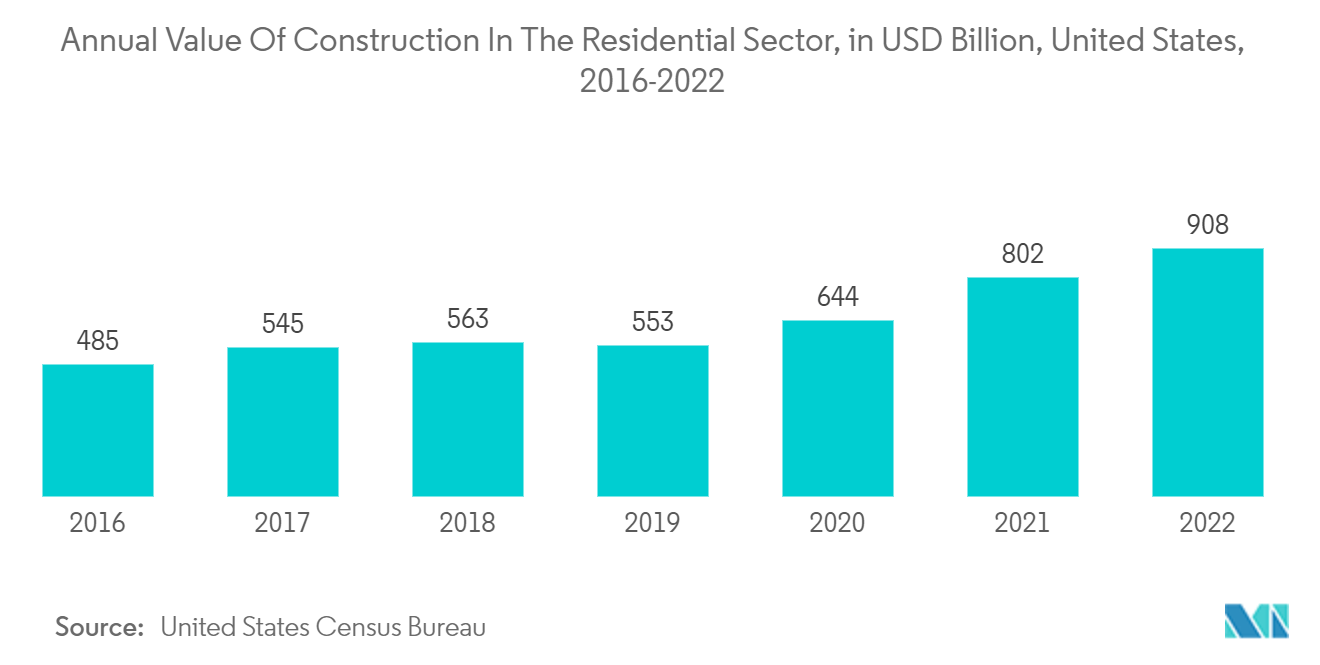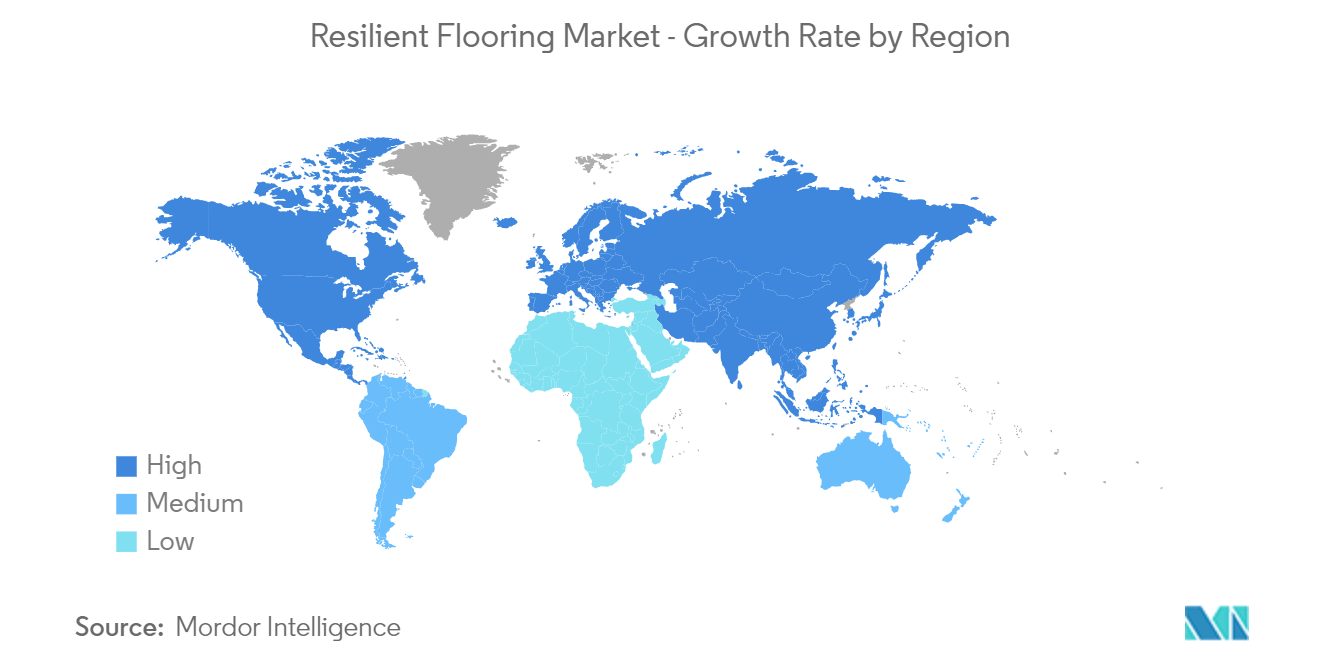Market Trends of Resilient Flooring Industry
Residential Application Segment to Dominate the Market
- The resilient flooring system is denser and non-absorbent and ensures a pliant surface that makes walking comfortable. Additionally, resilient flooring also ensures less maintenance than other flooring. Thus, the demand for resilient flooring is increasing in residential buildings.
- Resilient flooring is a lot cheaper than non-resilient, and its comparably durable nature makes it a relatively cost-effective option for residential homes and commercial buildings. The increasing focus on customization in the flooring of residential buildings and manufacturing processes had a significant impact on the growing demand for resilient flooring from residential building construction.
- The Asia-Pacific and North America are the most significant regions for residential construction globally. In North America, residential construction activities are increasing in countries like the United States and Canada, which are driving the market for resilient flooring. According to the US Census Bureau, the annual value of residential construction output in the United States was valued at USD 908 billion in 2022, compared to USD 802 billion in 2021.
- Similarly, in Canada, new residential construction projects are expected to drive the country's market for resilient flooring. The number of new housing starts in Canada is registered at 64,042 units in Q2, 2023, compared to 46,851 units started in Q1, 2023.
- Similarly, in Europe, residential construction activities are increasing. Germany is the largest market for residential construction in the region. The country's construction industry has been growing and is driven by increasing new residential construction activities. For instance, according to Eurostat, the building construction revenue is registered at USD 114 billion in 2022 and is expected to reach USD 125.4 billion by 2024.
- Hence, owing to the factors mentioned above, the residential application segment is expected to dominate the resilient flooring market during the forecast period.

Asia-Pacific Region to Dominate the Market
- The Asia-Pacific region is expected to dominate the resilient flooring market during the forecast period. The rising demand for resilient flooring from residential building construction and growing application in the commercial sector in developing countries like China, Japan, and India is expected to drive the demand for resilient flooring in this region.
- China is one of the largest construction markets in the region. According to the National Bureau of Statistics of China, the value of construction output accounted for CNY 31.2 trillion (USD 4.5 trillion) in 2022, up from CNY 29.3 trillion (USD 4.2 trillion) in 2021. China is expected to spend nearly USD 13 trillion on buildings by 2030.
- Furthermore, the increasing disposable income in the country has triggered the growth of lavish commercial spaces like malls, hotels, offices, etc. China is one of the leading countries in the construction of shopping centers. China has almost 4,000 shopping centers, while 7,000 more are estimated to be open by 2025. Moreover, the construction of office spaces such as Wuhan Fosun Bund Center T1 in China is expected to boost the market studied. Construction work started in Q3 2021 and is forecasted to complete in Q4 2025.
- Similarly, in India, as per the Budget of 2023-2024, a dedicated amount of USD 1,218 million per annum has been allocated through urban infra-development funds for Tier II and Tier III cities. This will result in the creation of quality urban infrastructure. This will also translate to higher demand for housing and commercial construction activities, thereby driving the market for resilient flooring.
- According to Global Construction 2030 (published by Global Construction Perspectives and Oxford Economics), Southeast Asia's construction market is anticipated to exceed USD 1 trillion by 2030, which in turn boosts the demand for resilient flooring in residential building construction.
- Owing to the above-mentioned factors, the market for resilient flooring in the Asia-Pacific region is projected to grow significantly during the study period.


